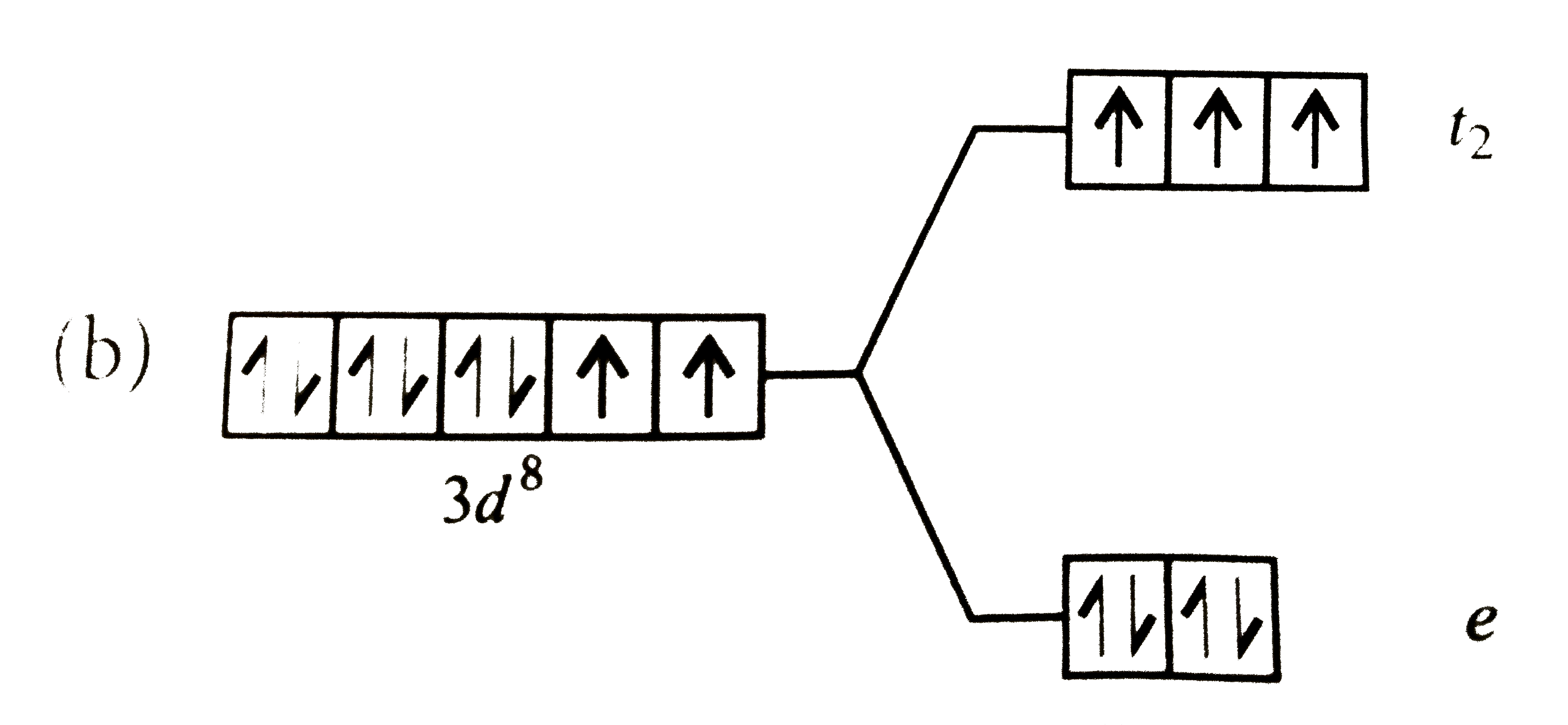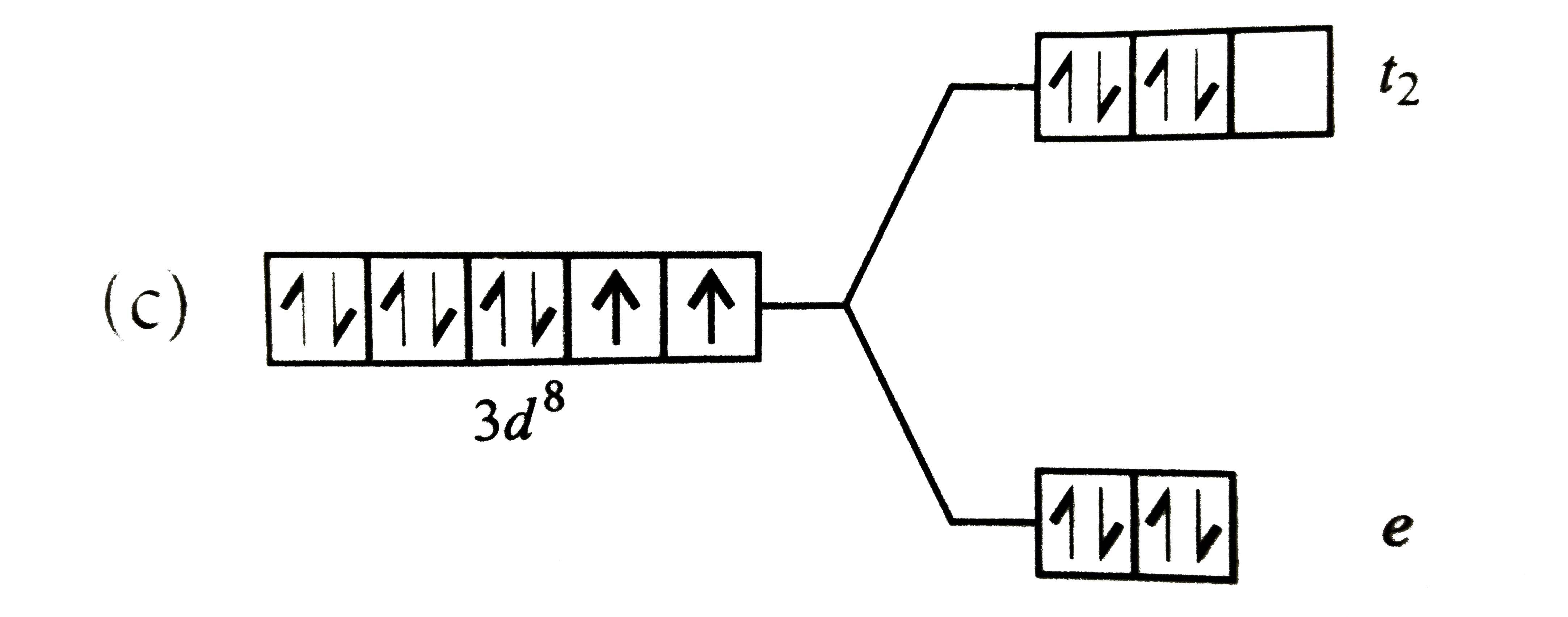Amongst TiF2−6,CoF3−6,Cu2Cl2andNiCl2−4 the colourless species are:
CoF3−6andNiCl2−4
TiF2−6andCoF3−6
Cu2Cl2andNiCl2−4
TiF2−6andCu2Cl2
The correct Answer is:D
To determine which of the given species are colorless, we need to analyze the electronic configurations of the transition metals in each compound and check for the presence of unpaired electrons. The presence of unpaired electrons can lead to d-d transitions, which are responsible for the color in transition metal complexes.
1. Identify the oxidation states and electronic configurations:
- TiF₆²⁻: Titanium is in the +4 oxidation state. The electronic configuration of titanium (Ti) is (Ar) 3d² 4s². In the +4 state, it loses all four valence electrons, resulting in 3d⁰.
- CoF₆³⁻: Cobalt is in the +3 oxidation state. The electronic configuration of cobalt (Co) is (Ar) 3d⁷ 4s². In the +3 state, it loses two 4s electrons and one 3d electron, resulting in 3d⁶.
- Cu₂Cl₂: Copper is in the +1 oxidation state (as Cu₂ means two Cu atoms, each in +1 state). The electronic configuration of copper (Cu) is (Ar) 3d¹⁰ 4s¹. In the +1 state, it loses one 4s electron, resulting in 3d¹⁰.
- NiCl₄²⁻: Nickel is in the +2 oxidation state. The electronic configuration of nickel (Ni) is (Ar) 3d⁸ 4s². In the +2 state, it loses two 4s electrons, resulting in 3d⁸.
2. Determine the presence of unpaired electrons:
- TiF₆²⁻ (3d⁰): No unpaired electrons (colorless).
- CoF₆³⁻ (3d⁶): Has unpaired electrons (colorful due to d-d transitions).
- Cu₂Cl₂ (3d¹⁰): No unpaired electrons (colorless).
- NiCl₄²⁻ (3d⁸): Has unpaired electrons (colorful due to d-d transitions).
3. Conclusion:
The colorless species among the given options are TiF₆²⁻ and Cu₂Cl₂.
Final Answer:
The colorless species are: TiF₆²⁻ and Cu₂Cl₂.
---
- TiF₆²⁻: Titanium is in the +4 oxidation state. The electronic configuration of titanium (Ti) is (Ar) 3d² 4s². In the +4 state, it loses all four valence electrons, resulting in 3d⁰.
- CoF₆³⁻: Cobalt is in the +3 oxidation state. The electronic configuration of cobalt (Co) is (Ar) 3d⁷ 4s². In the +3 state, it loses two 4s electrons and one 3d electron, resulting in 3d⁶.
- Cu₂Cl₂: Copper is in the +1 oxidation state (as Cu₂ means two Cu atoms, each in +1 state). The electronic configuration of copper (Cu) is (Ar) 3d¹⁰ 4s¹. In the +1 state, it loses one 4s electron, resulting in 3d¹⁰.
- NiCl₄²⁻: Nickel is in the +2 oxidation state. The electronic configuration of nickel (Ni) is (Ar) 3d⁸ 4s². In the +2 state, it loses two 4s electrons, resulting in 3d⁸.
- TiF₆²⁻ (3d⁰): No unpaired electrons (colorless).
- CoF₆³⁻ (3d⁶): Has unpaired electrons (colorful due to d-d transitions).
- Cu₂Cl₂ (3d¹⁰): No unpaired electrons (colorless).
- NiCl₄²⁻ (3d⁸): Has unpaired electrons (colorful due to d-d transitions).
The colorless species among the given options are TiF₆²⁻ and Cu₂Cl₂.
The colorless species are: TiF₆²⁻ and Cu₂Cl₂.
Topper's Solved these Questions
- d-BLOCK ELEMENTSBOOK - VK JAISWAL ENGLISHCHAPTER - d-BLOCK ELEMENTSEXERCISE - ASSERTION-REASON TYPE QUESTIONS
32 Videos
- d-BLOCK ELEMENTSBOOK - VK JAISWAL ENGLISHCHAPTER - d-BLOCK ELEMENTSEXERCISE - SUBJECTIVE PROBLEMS
6 Videos
- CO-ORDINATION COMPOUNDSBOOK - VK JAISWAL ENGLISHCHAPTER - CO-ORDINATION COMPOUNDSEXERCISE - LEVEL 2
144 Videos
- ENVIRONMENTAL CHEMISTRYBOOK - VK JAISWAL ENGLISHCHAPTER - ENVIRONMENTAL CHEMISTRYEXERCISE - ASSERTION-REASON TYPE QUESTIONS
14 Videos
Similar Questions
Knowledge Check
Amongst TiF2−6,CoF3−6,Cu2Cl2 and NiCl2−4, which are the colourless species ? (atomic number of Ti = 22 , Co = 27, Cu = 29, Ni = 28)
A1. CoF3−6andNiCl2−4B2. TiF2−6andCu2Cl2C3. Cu2Cl2andNiCl2−4D4. TiF2−6andCoF2−6In [NiCl4]2− ,the number of unparied electron is
A B
B C
C D
D
Find CFSE of [Fe(H2O)6]2+ and [NiCl4]2−
View SolutionAmongst Ni(CO)4,[Ni(CN)4]2−andNiCl2−4:
View SolutionFind CFSE of [Fe(H2O6)]2+ and [NiCl4]2−
View SolutionAmongst Ni(CO)4,[Ni(CN)4]2− and [NiCl4]2−
View SolutionOut of Cu2Cl2 and CuCl2, which is more stable and why?
View SolutionAmong [Ag(NH3)2]Cl,[Ni(CN)4]2−and[CuCl4]2− which
remains colourless in aqueous solutions and why?
(Atomic number of Ag=47, Ni = 28, Cu= 29).
View Solution
